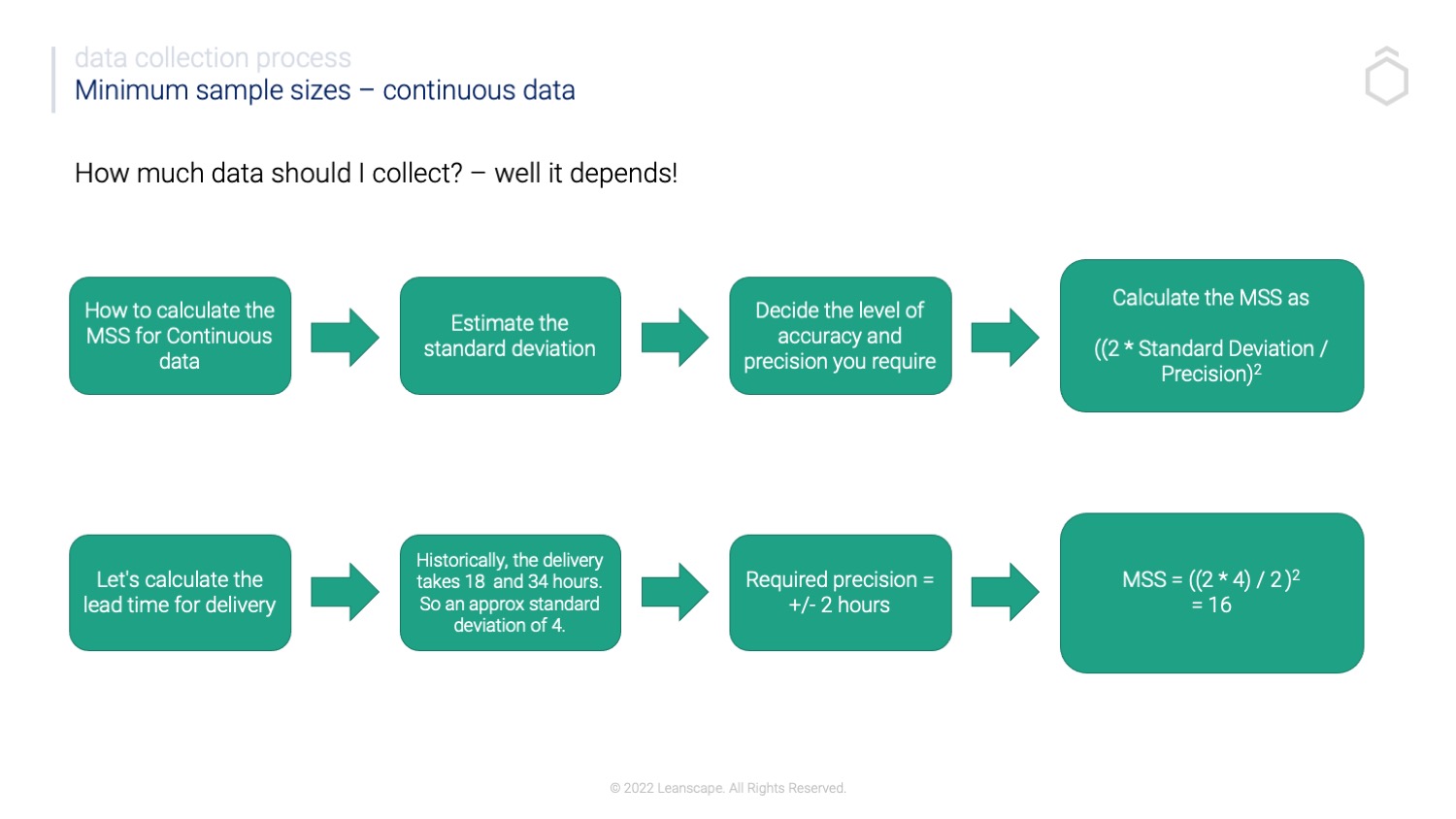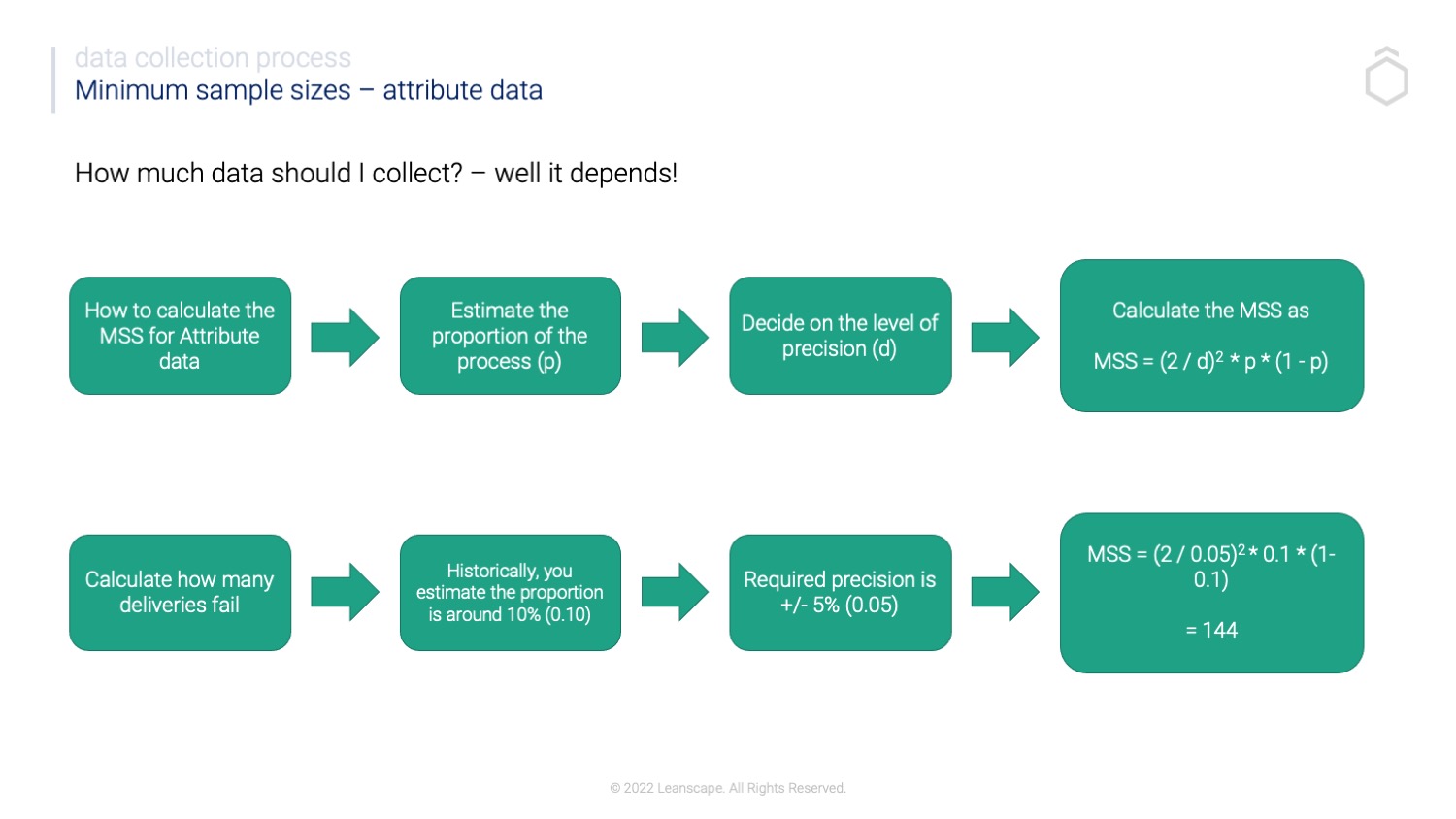A lean six sigma initiative is only as good as the data that supports it. A minimum sample size of 30 to 50 is required for reliable results. But this depends on a number of key factors.
Applying statistical methods to measure process performance and capability can be a powerful way to drive process improvement. Six Sigma and Lean Six Sigma are two commonly used approaches that leverage statistical analysis to identify causes of process variation and defects.
When applying these methods, one crucial question that must be answered is, “What is the minimum sample size required?” The answer to this question depends upon several factors, including the desired level of precision, confidence, and accuracy. This post will explore these factors and guide how to determine the minimum sample size for your Lean Six Sigma initiative.
To properly implement Six Sigma, you need a certain amount of data. This data is used to calculate things like defect rates and process capability. The more data you have, the more accurate your calculations will be. This is why it’s essential to have a large enough sample size when implementing Six Sigma.
Factors Affecting Minimum Sample Size
Three primary factors affect the minimum sample size for a Lean Six Sigma initiative:
1. Precision
2. Confidence
3. Accuracy
Let’s take a closer look at each of these factors.
Precision
Precision is a measure of how close repeated measurements are to each other. It is usually expressed as a percentage or fraction of tolerance. For example, if the tolerance on a product specification is +/- 2 mm, then a precision of 0.5 means that all measurements are within 1 mm of each other. A higher level of precision requires more data to be collected (i.e., a larger sample size).
Confidence
Confidence is a measure of how likely it is that the results of a study represent the true population value. It is usually expressed as a percentage or probability (e.g., 95%). A higher confidence level requires more data (i.e., a larger sample size).
Accuracy
Accuracy is a measure of how close the results of a study are to the true population value. It can be expressed as a percentage or absolute value (e.g., +/- 3%). A higher level of accuracy requires more data to be collected (i.e., a larger sample size).
Determining Minimum Sample Size
There are numerous ways to determine the minimum sample size required for your Lean Six Sigma initiative. One standard method is to use Table 1 in ASQ’s Statistical Methods Handbook, which provides guidance based on the desired level of precision, confidence, and accuracy. Another option is to use Minitab’s Power and Sample Size calculator, which allows you to input your desired values and automatically generates the minimum sample size needed. Keep in mind that you will need to have some basic understanding of statistics before you can adequately apply either of these methods.
Or our suggested method, is to use the example calculations below:
Calculating Minimum Sample Size for Continuous Data

Calculating Minimum Sample Size for Attribute Data

One of the key factors you can see from the calculations above is if your data is attribute data or continuous data.
Conclusion:
Overall, the minimum sample size for a Lean Six Sigma initiative depends on three key factors: precision, confidence, and accuracy. By considering these factors and using one of the available methods for determining minimum sample size, you can ensure that your initiative has the power it needs to succeed.


















